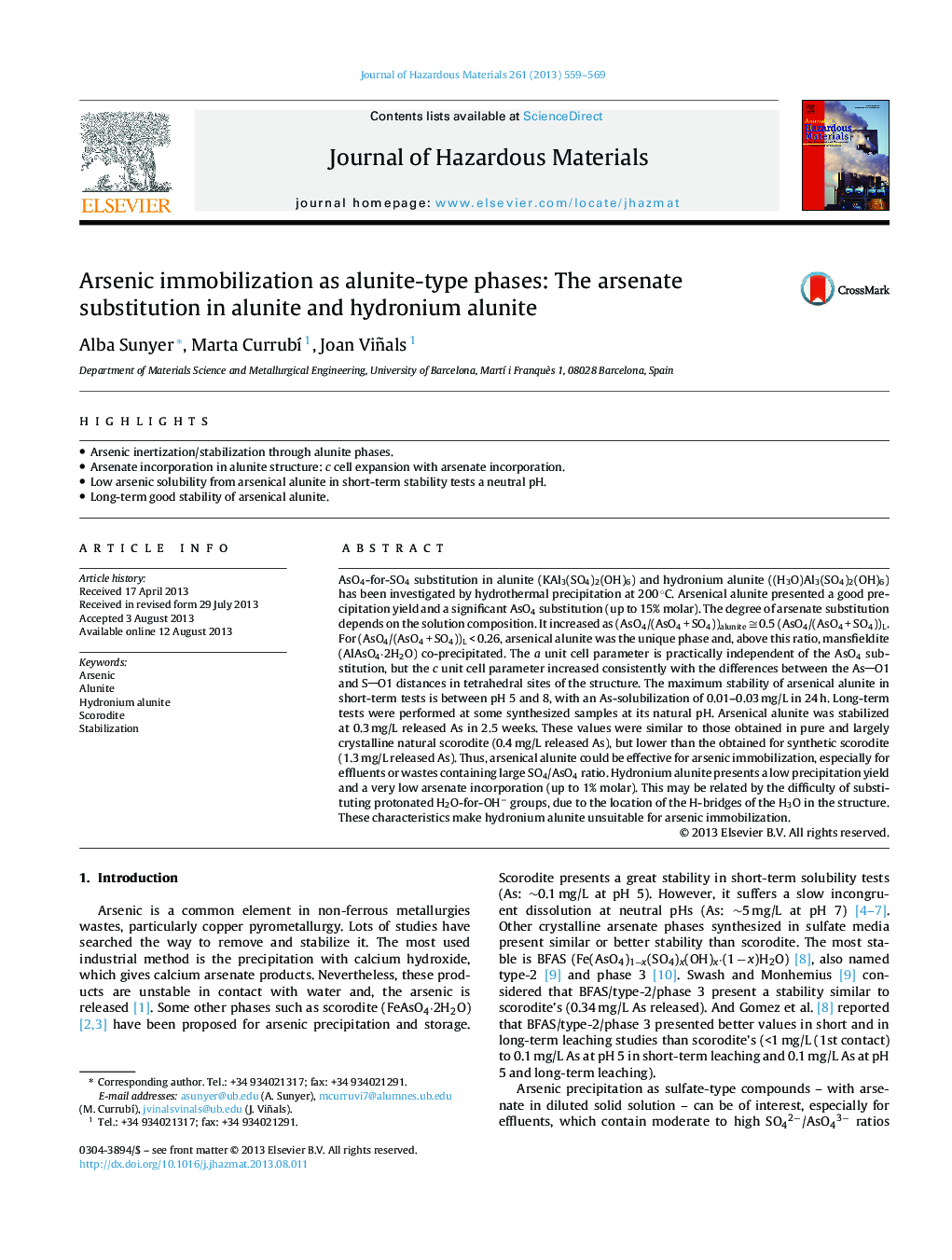| Article ID | Journal | Published Year | Pages | File Type |
|---|---|---|---|---|
| 6972122 | Journal of Hazardous Materials | 2013 | 11 Pages |
Abstract
AsO4-for-SO4 substitution in alunite (KAl3(SO4)2(OH)6) and hydronium alunite ((H3O)Al3(SO4)2(OH)6) has been investigated by hydrothermal precipitation at 200 °C. Arsenical alunite presented a good precipitation yield and a significant AsO4 substitution (up to 15% molar). The degree of arsenate substitution depends on the solution composition. It increased as (AsO4/(AsO4 + SO4))alunite â
 0.5 (AsO4/(AsO4 + SO4))L. For (AsO4/(AsO4 + SO4))L < 0.26, arsenical alunite was the unique phase and, above this ratio, mansfieldite (AlAsO4·2H2O) co-precipitated. The a unit cell parameter is practically independent of the AsO4 substitution, but the c unit cell parameter increased consistently with the differences between the AsO1 and SO1 distances in tetrahedral sites of the structure. The maximum stability of arsenical alunite in short-term tests is between pH 5 and 8, with an As-solubilization of 0.01-0.03 mg/L in 24 h. Long-term tests were performed at some synthesized samples at its natural pH. Arsenical alunite was stabilized at 0.3 mg/L released As in 2.5 weeks. These values were similar to those obtained in pure and largely crystalline natural scorodite (0.4 mg/L released As), but lower than the obtained for synthetic scorodite (1.3 mg/L released As). Thus, arsenical alunite could be effective for arsenic immobilization, especially for effluents or wastes containing large SO4/AsO4 ratio. Hydronium alunite presents a low precipitation yield and a very low arsenate incorporation (up to 1% molar). This may be related by the difficulty of substituting protonated H2O-for-OHâ groups, due to the location of the H-bridges of the H3O in the structure. These characteristics make hydronium alunite unsuitable for arsenic immobilization.
Keywords
Related Topics
Physical Sciences and Engineering
Chemical Engineering
Chemical Health and Safety
Authors
Alba Sunyer, Marta CurrubÃ, Joan Viñals,
